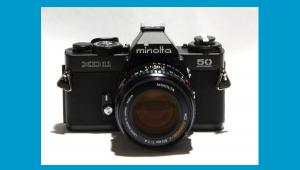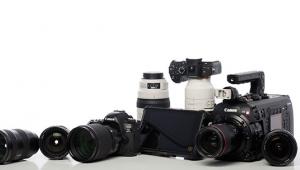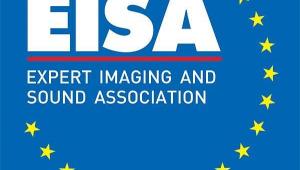TIPA Celebrates 25 Years in Photography

The Technical Image Press Association (TIPA) is an organization comprised of editors and representatives of photographic magazines from North and South America, Europe, Asia, Australia, and Africa. Spanning the consumer, professional, and trade sectors, each member magazine is dedicated to bringing the message of the joy of photography as well as providing technical, business, and industry news and information to their readers.
Known chiefly for the annual TIPA Awards, which are voted on by member magazines and recognize the best of 40 categories, including cameras, lenses, printers, and more (the winners were featured in Shutterbug’s August issue), TIPA also provides key information about the photo industry, does in-depth testing of photographic equipment, offers photo contests for magazine readers, and initiates technical and exploratory discussions with imaging companies. Shutterbug is the sole US member in the organization and is represented by Editor-at-Large George Schaub.

European To Worldwide Coverage
TIPA began with meetings organized among 12 European magazines at photokina, 1990. From the beginning, TIPA was founded as a nonprofit, independent group that would spend any income derived from its activities on promoting photography and the photo industry, and determining winners and promoting the value of the annual TIPA Awards.
Needless to say, photography and the photo industry underwent massive change in the years since TIPA’s founding, and the group has adapted accordingly. Said Juan Valera, a founding member and chairman of the group until 2008, “During those years we saw many photo companies either disappear or become incorporated into other companies, as well as the addition of consumer electronics and software industries who play an increasingly important role in the development of photography.” TIPA member magazines are vital to this process, as each is considered a leading expert in their respective area of coverage and has tracked and even led the understanding and adaptation of the changes that have so affected photography in the last 25 years.
In 2008, as photography and the image became firmly recognized as the “universal language,” then Chairman Thomas Gerwers recognized that TIPA should become a worldwide organization. Subsequently, magazines from the US and Canada, Brazil, South Africa, China, Australia, and India—as well as a working relationship with the Japanese Camera Journal Press Club—have joined the group, with Shutterbug being invited to become a member magazine in 2009.

TIPA And The Imaging Revolution
The TIPA Awards have always served as a bellwether for changes in photographic technology and innovation. Year after year, the association’s Technical Committee expanded and changed categories in line with the revolution in how images were captured, processed, and utilized. During the years when film was the predominant medium, the entire industry could be classified or grouped by 10 to 20 TIPA Award categories. But with the advent of digital photography, many new technologies and tools were introduced to the market, and new categories were steadily added to the TIPA Awards, reflecting the ever-changing landscape of the photographic industry. Currently, TIPA has a total of 40 different category awards, compared with five categories in 1991.
In that sense, reference to past TIPA Awards is a way to trace the evolution of and revolution in photography over the past 25 years. In 1991, Kodak received one of the first TIPA Awards, however it was not for film but for the Photo CD system. The first digital back, a technology then in its infancy, to receive a TIPA Award was in 1994, awarded to the American company Dicomed. By the turn of the century, 33 percent of the products that received TIPA Awards were associated with digital imaging. In 2001, half of the products receiving a TIPA Award were in the digital imaging realm.
In 2005, the Nikon F6 was the last of the great film SLR cameras to receive an award, and by 2009, Kodak’s EKTAR 100 color negative film received the last TIPA Award in the Best Film category. This, however, marked the end of one era and the beginning of a new age in photography, and those categories were replaced by those that reflected the changes in photography: from that point on, the TIPA Awards in the camera category became 100 percent digital.
The Selection Process
At the beginning of each year, the Technical Committee of TIPA, each member of which has researched, attended trade shows, tested products, and met for in-depth discussions with numerous industry members, puts together a potential list of candidates for nomination in each of 40 categories. These include cameras and lenses in the amateur, enthusiast, and professional groups, as well as specialty items such as printers, papers, mobile imaging, and “hybrid” still/video products, as well as those that stand out in terms of their breakthrough innovations and design. Shutterbug’s George Schaub serves as a member of the Technical Committee.
Once compiled, the candidate list, which at times includes more than one potential winner, is then sent to the entire magazine member list. Members are encouraged to add other nominees during this period, which then culminates in a General Assembly meeting for the vote, this year held in Dubai, United Arab Emirates. At the assembly, debate takes place and changes are sometimes made, and the finalists are chosen by majority vote among all members. This ensures that many different voices are heard from all parts of the world and that TIPA Awards reflect the opinion of the worldwide photo press.
Value Of The Awards
Said Thomas Gerwers, chairman of TIPA since 2008, “The TIPA Awards help photographers recognize excellence in photographic and imaging products among the hundreds introduced each year. At the same time, the award recognizes the hard work, engineering, innovation, and design achievements of the winning photographic companies.” The pride these companies feel in winning an award is on display at each year’s award ceremony, held biannually at photokina and in alternate years in Tokyo, Japan.
“As a technical medium,” Gerwers said, “the process of taking pictures involves equipment, and TIPA guides photographers when it comes to the question: which are the ‘Best of the Best?’ Photographic technology is always in transition, and TIPA member magazines know very well what photographers are seeking, an in-depth view about trends and innovations, so their expertise is of great value. Our aim is to continue to stay current as well as look ahead as imaging technology continues to evolve.
“We carefully select suitable new members and always strive to attract leading photo magazines in order to build the best expertise in photography. Innovation never stops, as does the development of our awards, and we will continue to ensure that they mirror the changes and evolution of imaging, as we have done over the past 25 years. The TIPA Award and logo has a worldwide reputation based on the process and integrity of TIPA’s decisions, which is the true basis of its success. Our goal is to maintain and enhance this legacy and to continue to earn our reputation as the most important worldwide organization of photo and imaging experts.”

To learn more about TIPA and to see the list of 2015 Award recipients, as well as a searchable database of the Award winners of the past 25 years, please visit www.tipa.com.
















































